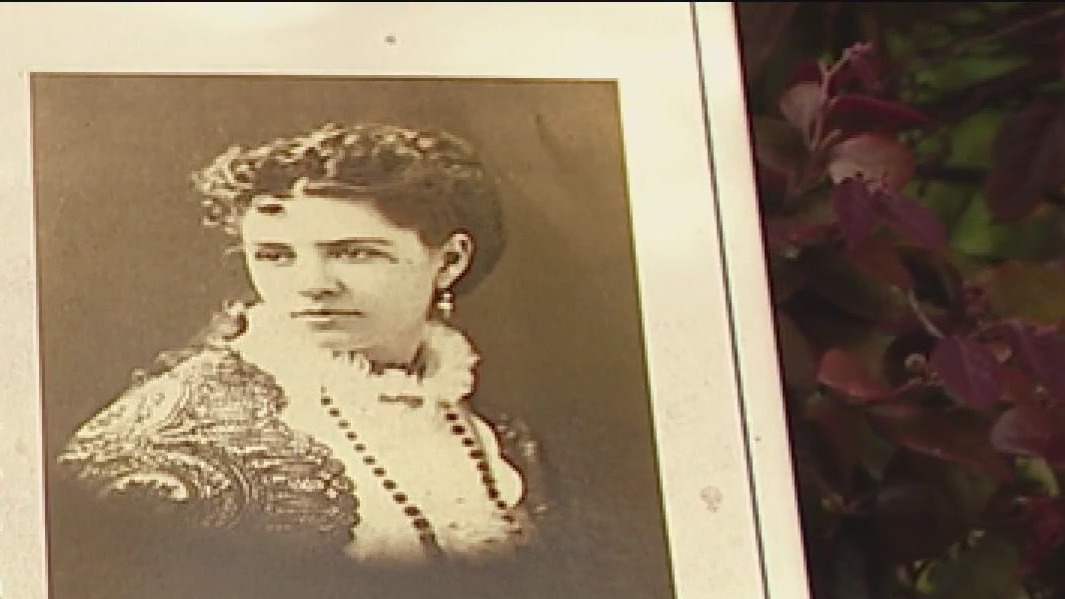Bay Area Women's History: The pioneering poet Ina Coolbrith
On a steep slope halfway up San Francisco's Russian Hill, neighborhood dog walkers and occasional tourists take in the spectacular views from a city park that bears the name of Ina Coolbrith, a once-famous San Francisco woman who many people don't know. Ina Coolbrith, a pioneering poet from 1841-1928, was known for her work as California's first Poet Laureate. Her award was given in 1915 during the Pan Pacific International Exhibition. Her friends included some of the most famous writers of the West, Bret Harte, Joaquin Miller, and Samuel Clemens, known by his pen name Mark Twain. Her first book of poetry was published at age 15 and her first published in 1856. Many of her manuscripts were lost in 1906 during the 1906 earthquake and fire. Her legacy includes mentoring many youths and working as a librarian in Oakland. Her poems still inspire her.

Publié : il y a 4 semaines par Jana Katsuyama dans
On a steep slope halfway up San Francisco's Russian Hill, neighborhood dog walkers and occasional tourists take in the spectacular views from a city park that bears the name of Ina Coolbrith, a once-famous San Francisco woman who many people don't know.
Ina Coolbrith lived from 1841-1928 and was a literary legend in her day, becoming California's first Poet Laureate.
"It was bestowed on her in 1915 during the Pan Pacific International Exhibition, which was a really big deal," said Christopher Pollock, the historian-in-residence for the San Francisco Recreation and Parks Department.
"She lived just a block away down the hill to the south," Pollock said, noting the spot at Taylor and Broadway.
Her friends were some of the most well-known writers of the West, including Bret Harte, Joaquin Miller, and Samuel Clemens, known by his pen name Mark Twain.
"Mark Twain is another person she got to know over time. So she really gets to know the cream of the crop of the poetry and literary set in San Francisco," Pollock said.
Her life reads like an epic novel with a secret past.
She was born in the town of Nauvoo, Illinois, across the Mississippi River from Iowa. At the age of 10, her family came by covered wagon to California, settling at first in Los Angeles. There, she published her first book of poetry at age 15 in 1856.
"She was very feisty and she stood up to people and she said what she thought," said Aleta George, who wrote a biography called "Ina Coolbrith: The Bittersweet Song of California's First Poet Laureate."
Coolbrith's name at birth was Josephine Smith. She was the niece of Joseph Smith, who founded the Mormon church.
George says during her research into Coolbrith's life, she found examples of the poet being feisty. At the age of 15, she sent a letter to a male cousin who was trying to convince her to embrace polygamy.
George says she objected to the idea with a scathing response.
"Is it right for a girl of 15 or even 16 to marry a man of 50 or 60? I think I see myself vowing to love and honor some old, driveling idiot of 60. To be taken into his harem and enjoy the pleasure of being his favorite sultana for an hour and then thrown aside whilst my godly husband is out, sparking another girl in hopes of getting another victim to his despotic power. Pleasant prospect...This is of God? Is it? No, never, never, never," George said reading Coolbrith's quote.
Coolbrith did marry at age 19, but after losing a child and divorcing her husband in 1851, she took her mother's birth name, Coolbrith, and seemed to find solace and joy in writing about nature and San Francisco.
In her poem Copa de Oro (California Poppy), she wrote a verse comparing the golden flower with the gold deep in California's land.
"Her sands of gold --of gold thy petals spun,
Her golden glory, thou! of hills and plains
Lifting exultant, every kingly cup
Brimmed with the golden vintage of the sun."
Evie Groch, President of the Ina Coolbrith Circle, says those poems still inspire their 150 members, who meet monthly and sponsor an annual poetry contest.
"I saw her as a trailblazer," Groch said. "There is a universalism about her message...anticipating death and loneliness and loss, and yet not losing hope at the same time."
Many of Coolbrith's manuscripts were lost in San Francisco's 1906 earthquake and fire.
At Oakland's Main Library, the Ina Coolbrith collection preserves the photos, newspaper clippings, and poems that did survive.
Her poems in the Overland Monthly literary magazine now sit on the shelves.
"She was actually in the very first edition of the Overland Monthly and Bret Harte was part of that editorial staff there, and she was actually published in the next 10 years on a weekly basis," Pollock said.
The collection also shows another chapter of her pioneering life.
Coolbrith became Oakland's first librarian in 1874, where she worked for some 20 years and mentored many Oakland youths, including a young boy named Jack London.
"She had an influence on Jack London's life, Isadora Duncan. All of these people had Oakland ties, so I think that's her lasting legacy," said Erin Sanders, Librarian at the Oakland History Center in the Oakland Public Library.
That legacy lives throughout the Bay Area, in quiet corners.
In Berkeley, there is an Ina Coolbrith Path at 1101 Miller Avenue, with a marker at the stairs up to Grizzly Peak Boulevard.
In Oakland, her bronze statue stands with other humanitarian heroes in a park on 13th Street in Henry Kaiser Memorial Park.
And in San Francisco, there is a special bench in Ina Coolbrith's Park with a plaque called Poet's Corner.
The spot looking out over the Bay gives visitors a place to sit and contemplate love and life, and feel the natural beauty that inspired one of California's literary pioneers.
